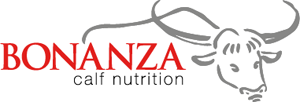Early-life heat stress exposure impacts dairy calf feeding and thermoregulatory behavior
Abstract:
Heat stress has well-known influences on dairy calf physiology, but less is understood about calf behavioral responses to heat stress. Herein, we evaluated milk replacer intake, standing activity, and lying behaviors of calves exposed to prenatal or postnatal heat stress or both.
Holstein calves were born to dams experiencing heat stress (HT; shade of a freestall barn) or cooling (CL; shade, fans, and soakers) during late gestation [~44 d before calving, prenatal; mean daily temperature-humidity index (THI) = 78]. They were then subsequently exposed to postnatal heat stress (shade and natural ventilation of an open-sided barn) or cooling (shade of the barn and forced ventilation by fans) from birth to weaning (56 d; mean daily THI = 77; n = 12 per prenatal °— postnatal treatment). Heat stress was confirmed by elevated respiration rate and rectal temperature of the prenatal dam and the postnatal calf. Calves were group-housed with automatic milk feeders, from which milk replacer (MR) intake was assessed. Calf behavior was monitored using loggers and video.
Postnatal-HT calves tended to consume less MR per hour in the late morning and drank less MR per visit relative to postnatal-CL calves. Postnatal-HT calves spent more time lying laterally and less time lying sternally in a tucked position during overnight hours. Prenatal-HT calves stood longer across the day, particularly overnight, compared with prenatal-CL calves. This study characterized behavioral responses of preweaning dairy calves exposed to chronic heat stress or active cooling during early-life developmental windows.
Contact us
Bonanza Calf Nutrition
Producers of the renowned Shine range of milk replacers for calves and lambs.
© 2017 Bonanza Calf Nutrition Ltd.
FIND US
